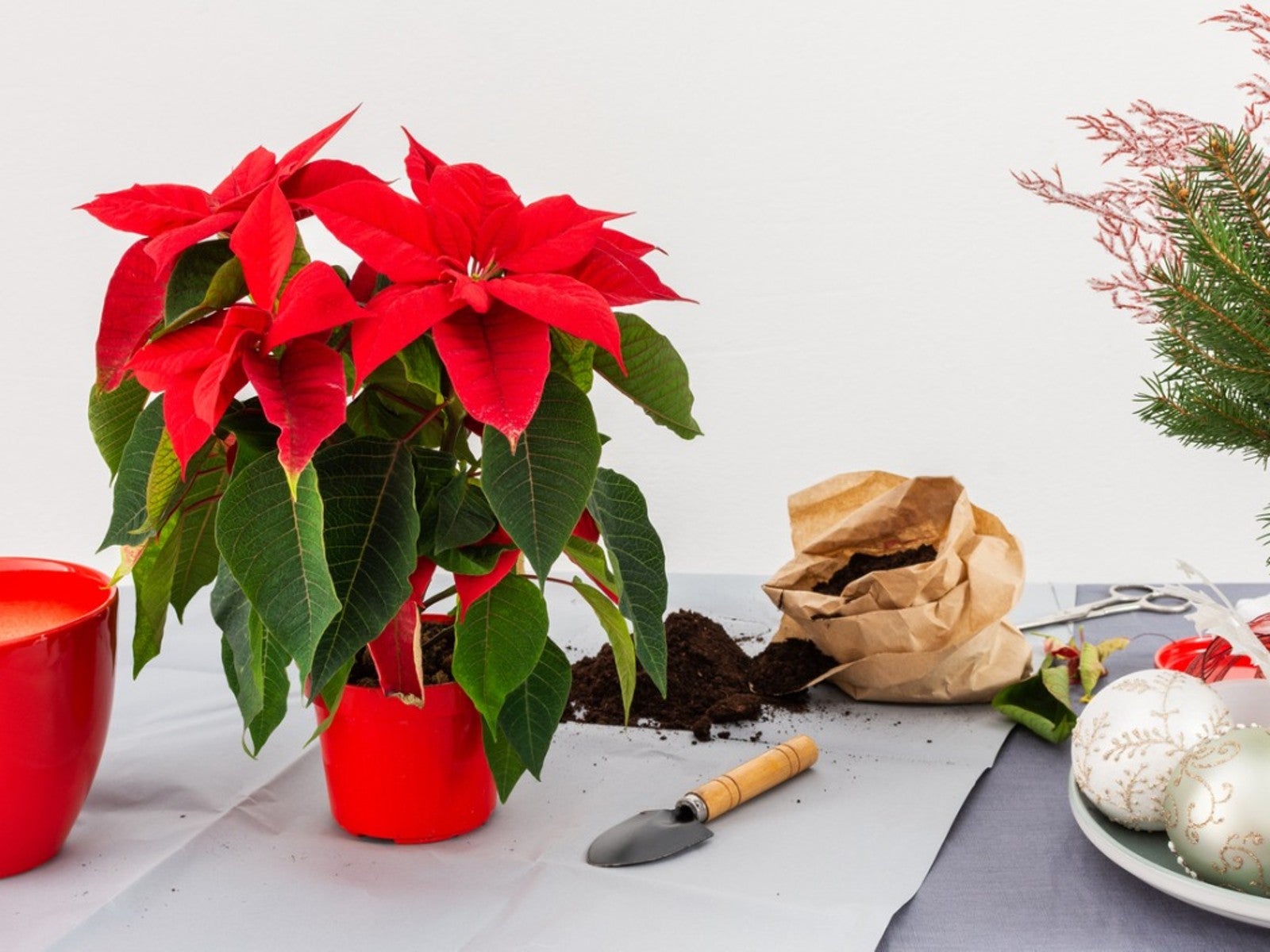How To Keep Poinsettias Alive Year After Year


Poinsettia is a classic Christmas flower with its festive red and white bracts. A native of Mexico, poinsettia has some unique needs that make it a little more challenging to keep as a normal houseplant. But caring for a poinsettia year round has its own reward: new blooms for the next holiday season.
About Poinsettias
The poinsettia we know as a holiday plant is actually a shrub or small tree in its native Mexico and Central America. It grows 10 to 15 feet tall (3.0 to 4.6 m.) as a deciduous or semi-evergreen plant on mid-elevation slopes along the Pacific Ocean. Its native habitat is tropical and seasonally wet.
What many people describe as the poinsettia flowers, that showy red part, are actually bracts. Bracts are modified leaves that surround the flower, which on poinsettia is the small yellow bloom in the center. Most poinsettia bracts are red, but in cultivation, you can find white, pink, and peach.
Do Poinsettias Come Back Every Year?
Like other tropical plants, poinsettias are most often grown as annuals. Most people buy them as decorations for the holiday season and then throw them away after in January or when they start to lose their luster.
Of course, in their native range, poinsettias grow year-round like other plants. This means that with the right care, you can keep yours going through the spring, summer, and fall, and get bright new bracts by next Christmas.
How to Care for Poinsettias Year Round
To take care of a poinsettia all year, start by providing the right conditions:
- A sunny room with no drafts
- Temperatures around 55 to 65 degrees Fahrenheit (12.8 to 18.3 Celsius) at night and between 65 and 70 (18.3 to 21.1 Celsius) during the day
- Protect from temperatures below 50 degrees Fahrenheit (10 Celsius)
- At least six hours of indirect light per day
- Water only when the soil is dry in the top two to three inches
- Water thoroughly each time, letting it run through the drainage holes
Overwatering and pooled water are very damaging to poinsettia. If you have bought a plant during the holidays, it probably has a festive plastic or foil wrap decorating the container. Remove this to avoid standing water and place the pot on a tray instead.
Gardening tips, videos, info and more delivered right to your inbox!
Sign up for the Gardening Know How newsletter today and receive a free copy of our e-book "How to Grow Delicious Tomatoes".
During the holiday season, you can keep your poinsettia healthy and blooming with these conditions, but also apply fertilizer. Use an all-purpose, water-soluble product about once a week.
After the holiday season, cut the plant back to the point that you have just a few leaves left. Continue with regular watering, but less often. Stop or drastically cut back on fertilizing too. You can also transplant it to a larger pot with good potting soil at this time.
One it’s warm enough outside, you can move your poinsettia outdoors. Find a spot where it will get good morning sunlight and some afternoon shade. Bring it back inside before it gets too cold in fall.
How to Make a Poinsettia Bloom
Bringing your poinsettia back to life begins in early October. Getting it to once again create colorful bracts and yellow flowers is a matter of getting light conditions right. The secret is to put the plant in darkness for 14 hours each day and bright light for the other 10 hours.
To do this, you can move the plant into a closet or dark room for the 14-hour period. Alternatively, place a box over it. If using a box, make sure there are no cracks to let in light. Even a small amount of light during the 14 hours can interfere with the plant’s production of buds. If you do it right, you should get colorful bracts again after two months.
Maintaining and reblooming a poinsettia requires some effort, but it isn’t hard. It can be worthwhile if you are able to be consistent with the light requirements in the fall. But if not, you might just want to buy a new plant each December.

Mary Ellen Ellis has been gardening for over 20 years. With degrees in Chemistry and Biology, Mary Ellen's specialties are flowers, native plants, and herbs.
-
 Looking For Plants To Give You The Soft And Fuzzies? Try These 5 Fuzzy Leaf Plant Options
Looking For Plants To Give You The Soft And Fuzzies? Try These 5 Fuzzy Leaf Plant OptionsLovers of texture, drama, silver foliage and tactile plants will adore these special sensory garden additions. These fuzzy leaf plant options will leave you all aglow
By Susan Albert
-
 Get Ready For A Summer Of Hummers! Grow These Full Sun Hummingbird Plants and Flowers
Get Ready For A Summer Of Hummers! Grow These Full Sun Hummingbird Plants and FlowersIf you’re lucky enough to enjoy a sunny backyard, make sure you are maxing out on your pollinator opportunities and grow these full sun hummingbird plants and flowers
By Tonya Barnett